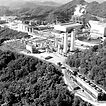
Poverty reduction
Growth
Taxes
Fiscal Equilibrium
We go beyond the traditional scope of analysis to build a solid corporate value proposition to address the complexity development challenges.
MALTHUS GLOBAL goes beyond the traditional analysis of direct effects in terms of macroeconomic and regional effects, taxes, employment and local procurement. We work to understand the outcomes and development implications considering different local socioeconomic scenarios.
In developing countries, the extractive industry can make a significant development contribution in terms of poverty reduction, transfer of technology and fiscal incomes.
We work and collaborate with development institutions, governments, mining companies and civil society groups.
Past Studies (Sample)
Contribution to Development and Prosperity
Past Studies (Sample)
Contribution to Development and Prosperity

Past Studies (Sample)
Contribution to Development and Prosperity

Dominican Republic, Fiscal contribution, Economic impact, Barrick, Pueblo Viejo, MInistry of Mining and Energy
Past Studies (Sample)
Contribution to Development and Prosperity

ICMM, Mining contribution to Development, Economic impact.
Past Studies (Sample)
Contribution to Development and Prosperity

Argentina, Veladero, San Juan, Fiscal contribution, Barrick.
Past Studies (Sample)
Contribution to Development and Prosperity

Chile, Fiscal contribution, Economic impact, BHP, Escondida, Poverty reduction, MDG.
MALTHUS GLOBAL Analysis 2022

Poverty in Mining Zones
Around 75% of the Extractive Industry GDP of Sub-Saharan Africa and Latin America is generated in countries/regions where the poverty levels are over 20% of the population, and 50% of the Extractive Industry GDP is from areas where poverty is greater than 40% (2020).
Considering these figures, mining development strategies should be aligned to improve the socioeconomic conditions in the areas of influence of the projects, mainly through fiscal contributions, employment and local economic linkages. Unfortunately, however, this is not the case.
During the last few years, large mining companies have preferred to align their corporate strategies to the political narratives of climate change and identity politics. While these approaches could improve the relationship with specific ‘non-state’ actors and political sectors, they simultaneously offer a narrow view to understanding stakeholders’ expectations and the growing complexities of sustainable dimensions.
Most importantly, these corporate approaches translate into an important disconnection between the corporate strategies and the reality of local stakeholders. They also reduce the opportunities for socioeconomic improvement, increase the business risk and feed potential socioeconomic conflicts.
The graph below shows selected countries of Sub-Saharan Africa and Latin America with Mining and Oil GDP over $1 billion, and their respective percentages of national poverty (National Poverty Line).
JULY 2022
Australia without Mining
A couple of weeks ago, the Queensland State Government (Australia) announced the decision to impose one of the world’s highest coal royalty taxes on the sector. This is a tough measure that will be paid by the mining companies but will affect (and also be paid by) suppliers, employees, expectations and the socioeconomic conditions at a regional level. Due to less future economic growth, this could also affect future fiscal incomes.
Australia’s prosperity is highly correlated to the direct mining contribution (10% to 12% of the GDP) and the indirect and induced effects of the sector (another 8% to 10% of the economy): taxes, macroeconomic stability, national and local procurement, employment, technology transfer, research, international recognition, and sustainable practices among others.
Hence, how does Australia look without mining?
The GDP per capita of Australia has evolved better than its OECD peers (see graph below for the period 2000-2021). In 2021, despite the global challenges the Australian GDP per capita topped at US$61k versus the US$51k average of the OECD countries.
Our analysis shows that WITHOUT MINING, the Australian performance in terms of GDP per capita would be under the average of OCDE countries, between US$46k and US$48k. It is still high, but at least 20-25% lower.
GDP per capita is an average measure of living standards, and despite its recognised limitations to understanding economic wellbeing, this analysis could be easily extended to employment, tax collection and the economic growth of other related industries.

JUN 2022
Copper Market - Forecast 2022 -2025
The copper demand (primary consumption) grew at a rate of 400k to 500K per year (period of 2015-2020, before COVID). By 2025, the primary consumption of copper could top 27,250 tons per year.
If no new large scale mining projects are developed, and the world copper production remains at 21,000 tons per year (est. 2021), we could expect a copper price increase of 35%-40% by 2025 (See graph and model below).
Hence, to mitigate this inconvenient price increase, the mining industry needs to incorporate (at least) two or three new large scale copper mining projects per year during the coming years.
Of course, considering the growing political instability in traditional mining countries, this could be a major opportunity for new mining regions and clusters (such as San Juan Province in Argentina), junior companies better connected with the local socioeconomic context, and the recycling industry

MAY 2022
Development, Mining and Energy Transition
We expect a growing demand for minerals linked to the energy transition during the following years, such as copper, nickel, cobalt, and manganese. This represents an important opportunity for countries with a significant share of the world production and mining companies (especially those with solid economic and political connections with China, which represents 39%-63% of the primary consumption of these minerals USGS).
However, the capacity of a country to transform mining opportunities into development and prosperity for the people, will not only be determined by the future market conditions but by the level of political stability and socioeconomic and environmental conflicts.
Unfortunately, during the past few years, we have seen the resurgence of radical ideologies, uncertainty in the mining regulations (Chile and Peru), violent conflicts (Chile and Peru), weak governance and transparency (D.R. Congo, Indonesia and Philippines), and ineffective public policies to improve the socio-economic conditions in mining regions (Chile, Peru, Indonesia, Philippines, South Africa and Gabon).
This is a vicious circle that feeds instability and more conflicts, and translates into enormous incentives for tax avoidance, cost reduction, lowering mining social investment, lowering performance standards, and accelerating the repayment period of investment.
Hopefully, the expected mining boom associated with the energy transition will not be another missed development opportunity for countries and mining communities.

Apr 2022
New Chilean Constitution and Mining in Chile
Last week, the Chilean Constitutional Convention released the final proposal for a New Constitution for Chile. It is probably one of the most anti-democratic, megalomaniac and racist documents I have ever seen.
If this document is approved during the next referendum (Sept 04th), the future economic and socio-political scenarios will be extremely complex. While the radical left will use this to transform the country into a constitutional dictatorship and consolidate their pathological social resentments, their ambitions could lead to anarchy, endless social unrest and even a civil war.
The new document has clear links to: the Collectivization in the Soviet Union (when Stalin took over the leadership of the country); the drastic Chinese farming policies (1959-1961) during the Great Leap Forward initiatives (which caused the greatest man-made famine in history); the Cuban regime; and the constitutions of Venezuela, Ecuador and Bolivia.
Animal Farm, the satirical novella by G. Orwell is a fair reference to visualize how Chile could end.
The proposed document creates a new political and judicial system, sanctifying the state’s role in the economy, weakening private property rights and will establish new indigenous autonomous nations within the country (Pluri-Naciones).
The new constitution allows abortion all the way to nine months of pregnancy. Of course, to avoid ‘politically offensive language’, the document’s rhetoric is ‘inclusive’, ‘green’, and distributes the power by gender and ethnic quotas.
A few implications for the mining sector in Chile are:
1. The country will have to spend decades building a new regulatory framework for mining development ad hoc with the new regime.
2. Negotiations to avoid expropriation, nationalization and tax increases. Only large corporations with ongoing operations will be able to survive. It will be extremely tough for junior companies. It is difficult to visualize new large scale mining projects.
3. Mining permits and licences based on political decisions.
4. Social conflicts and radicalization of indigenous groups in the area of influence of the projects.
5. CSR and ESG programs will be absolutely inefficient for building trust and reputation.
6. Socioeconomic deterioration in the mining regions (Atacama, Antofagasta & Tarapaca).
